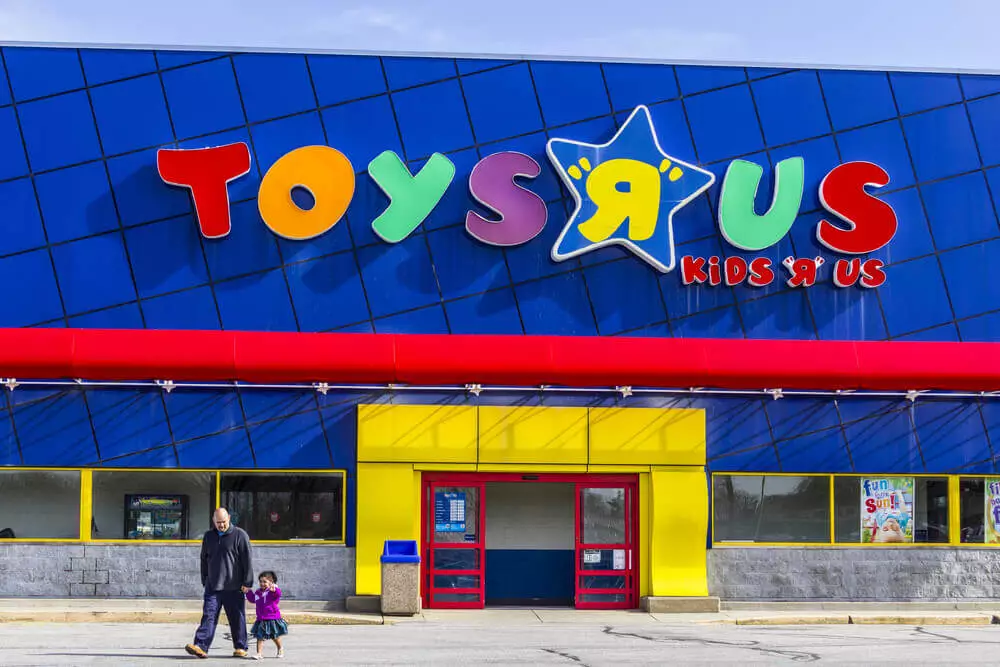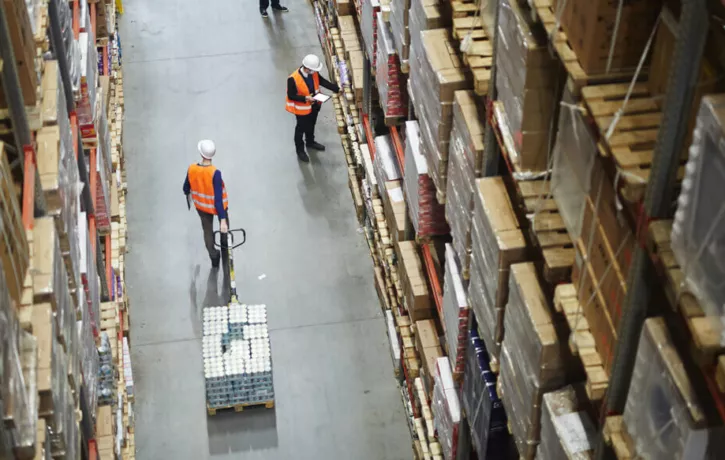I remember the joy I felt as a child whenever my parents announced we were going to Toys R Us.
I could hardly control my excitement, squirming against the seatbelt as my dad drove us to the store in the family minivan. I can still recall the thrill of sneaking away from my mom so I could run through the aisles unconstrained by the “you can pick one toy” rule.
The demise of Toys R Us, once the dominant U.S. toy seller, marks the end of an era.

 Consumers no longer think of shopping as online or offline.
They want one, seamless experience that combines the best elements of both. While agile companies adopted digital strategies early on, those that clung to their traditional business models are on the verge of extinction, if they’re not already dead.
It’s now obvious that a digital strategy isn’t only critical for success, but for survival.
Consumers no longer think of shopping as online or offline.
They want one, seamless experience that combines the best elements of both. While agile companies adopted digital strategies early on, those that clung to their traditional business models are on the verge of extinction, if they’re not already dead.
It’s now obvious that a digital strategy isn’t only critical for success, but for survival.
 Most businesses will struggle to meet consumers’ expectations for convenience, immediacy, and personalization without a powerful online presence.
The demise of many retailers should be a warning to company executives in all industries. Consumers expect access to digital tools in banking, healthcare, education — you name it. Companies that fail to provide these things will quickly lose out to the competition.
Most businesses will struggle to meet consumers’ expectations for convenience, immediacy, and personalization without a powerful online presence.
The demise of many retailers should be a warning to company executives in all industries. Consumers expect access to digital tools in banking, healthcare, education — you name it. Companies that fail to provide these things will quickly lose out to the competition.
 Walgreens’ total pharmacy sales are up 14.1%, surpassing 1 billion prescriptions for the first time, Retail Info Systems reported.
Engagement with Walgreen’s digital channels is growing. More than 20% of its retail prescriptions were ordered digitally during the first quarter of 2018.
The company’s mobile app has exceeded 50 million downloads, and it boasts a 5-star customer rating in the U.S. Apple App store, according to the report.
Walgreens’ total pharmacy sales are up 14.1%, surpassing 1 billion prescriptions for the first time, Retail Info Systems reported.
Engagement with Walgreen’s digital channels is growing. More than 20% of its retail prescriptions were ordered digitally during the first quarter of 2018.
The company’s mobile app has exceeded 50 million downloads, and it boasts a 5-star customer rating in the U.S. Apple App store, according to the report.

Table of Contents
hide
Same story, different franchise
The news that Toys R Us filed a motion to liquidate its business and shutter its 735 remaining stores is just the latest in the U.S. retail apocalypse. It follows the closure of 1,430 Radio Shack locations, 808 Payless stores, 220 of HHGregg, and 238 Kmarts. Total closures in the U.S. exceeded 8,000 in 2017, according to Business Insider. This is more than triple the 2,056 stores that closed in 2016. A whopping 5,077 closed in 2015. Analysts say the closures are primarily due to unpayable debt from buyouts by private equity firms. Another significant factor is rising competition from online retailers. As digital retail giants like Amazon capture more and more market share, companies that resisted digital transformation began to drop.Don’t let your digital transformation effort fail. Discover how WalkMe instantly simplifies the process.
Consumer demands are shifting
 Consumers no longer think of shopping as online or offline.
They want one, seamless experience that combines the best elements of both. While agile companies adopted digital strategies early on, those that clung to their traditional business models are on the verge of extinction, if they’re not already dead.
It’s now obvious that a digital strategy isn’t only critical for success, but for survival.
Consumers no longer think of shopping as online or offline.
They want one, seamless experience that combines the best elements of both. While agile companies adopted digital strategies early on, those that clung to their traditional business models are on the verge of extinction, if they’re not already dead.
It’s now obvious that a digital strategy isn’t only critical for success, but for survival.
A digital transformation primer for retailers
At this point, many leaders of retail companies have put digital transformation at the top of their to-do list. But important questions remain:- Is it even possible to embark on digital transformation this late in the game?
- How can big box retailers adopt digital retail strategy with their massive storefronts and thousands of employees?
Retailers have no choice but to go digital, and other industries should take note
 Most businesses will struggle to meet consumers’ expectations for convenience, immediacy, and personalization without a powerful online presence.
The demise of many retailers should be a warning to company executives in all industries. Consumers expect access to digital tools in banking, healthcare, education — you name it. Companies that fail to provide these things will quickly lose out to the competition.
Most businesses will struggle to meet consumers’ expectations for convenience, immediacy, and personalization without a powerful online presence.
The demise of many retailers should be a warning to company executives in all industries. Consumers expect access to digital tools in banking, healthcare, education — you name it. Companies that fail to provide these things will quickly lose out to the competition.
When creating a digital retail strategy, leaders must account for existing brick and mortar stores.
For many, declining foot traffic and lower in-store sales might necessitate closing some locations. But done correctly, companies can integrate their digital retail strategy into the in-store experience.Case study: Walgreens
Walgreens is a prime example. The pharmacy chain, founded in 1901, operates 8,100 stores in all 50 states, Puerto Rico, Washington, D.C., and the U.S. Virgin Islands. Walgreens’ digital transformation effort is anchored by three core goals, which can be applied to any business:-
- Bridge the gap between the physical and digital experience
- Improve customer-centricity and personalization
- Better integrate technology to improve the overall customer experience
The customer experience drives digital innovation
The customer experience is central to every change the company has introduced, Deepika Pandey, chief digital marketing officer of Walgreens, wrote for Think With Google. For example, Walgreens wanted to replicate the personal relationships customers have with their pharmacists online. With Pharmacy Chat, customers can talk to pharmacists through its website or mobile app at any time and from anywhere.The key is integrating the digital with the physical
The company also wanted to use technology to improve the in-store experience, according to Pandey. To help customers choose the best product for them, Walgreens partnered with WebMD to create Relief Advisor. After answering a few questions, the digital advisor recommends products to best meet customers’ specific needs. Walgreens linked its loyalty program with Android Pay to make the checkout process smoother. This allows customers to save digital coupons and apply their loyalty points when they make purchases through their phone. The response has been positive.OMG. Android Pay worked so AWESOME at Walgreens. Started Android Pay app, touched the machine, heard the tone and DONE! #androidpay
— Jeff Hensel (@henselj) October 1, 2015
That’s why I stick to @Walgreens. I can use Android Pay on my watch. Frictionless purchase experience.
— Kiran J. Holla (@kiranjholla) December 31, 2017
Walgreens’ innovation efforts are consumer-led. Pandey says the company routinely invites customers to its facilities to provide direct insight about the kinds of services they want. The company then looks for ways to remedy customer pain points with technology.I can get used to this Android Pay…. no money, pay with phone…. — feeling excited at Walgreens https://t.co/oSKXo4usez
— Devinicole1 (@Haley78) May 16, 2017
Walgreens’ digital transformation efforts are paying off
 Walgreens’ total pharmacy sales are up 14.1%, surpassing 1 billion prescriptions for the first time, Retail Info Systems reported.
Engagement with Walgreen’s digital channels is growing. More than 20% of its retail prescriptions were ordered digitally during the first quarter of 2018.
The company’s mobile app has exceeded 50 million downloads, and it boasts a 5-star customer rating in the U.S. Apple App store, according to the report.
Walgreens’ total pharmacy sales are up 14.1%, surpassing 1 billion prescriptions for the first time, Retail Info Systems reported.
Engagement with Walgreen’s digital channels is growing. More than 20% of its retail prescriptions were ordered digitally during the first quarter of 2018.
The company’s mobile app has exceeded 50 million downloads, and it boasts a 5-star customer rating in the U.S. Apple App store, according to the report.

